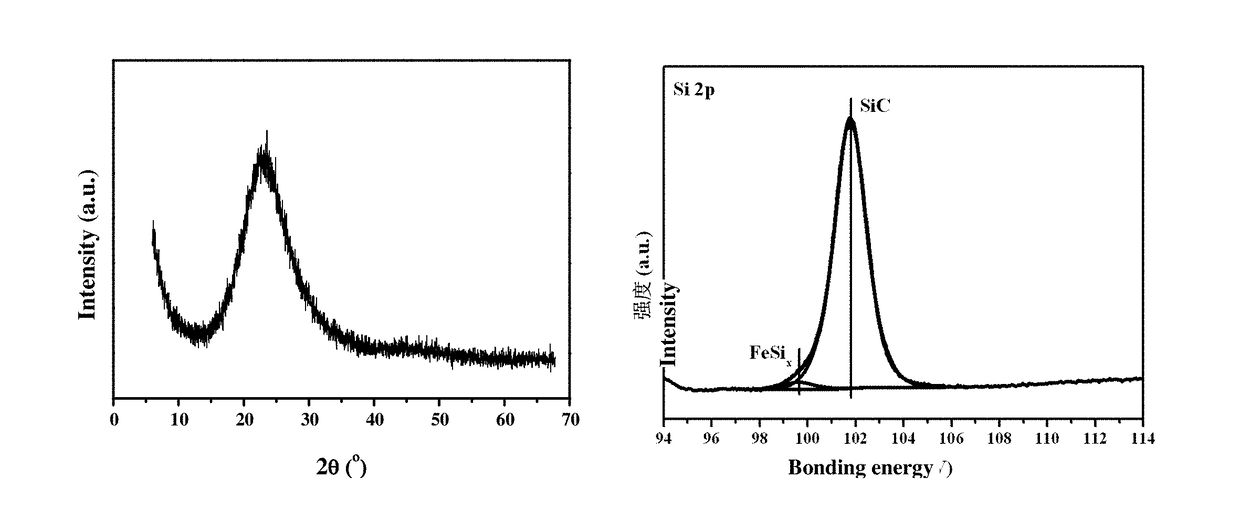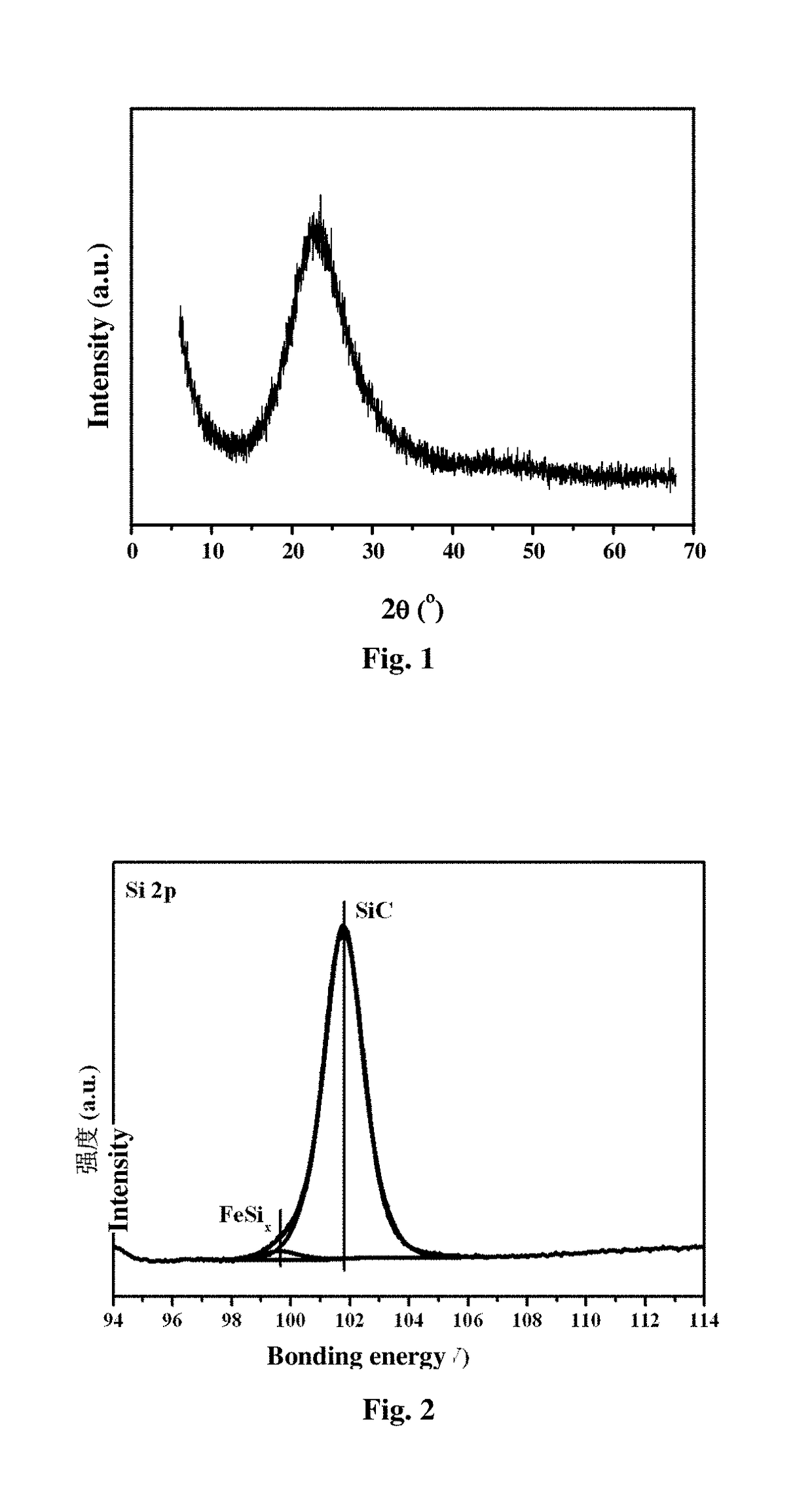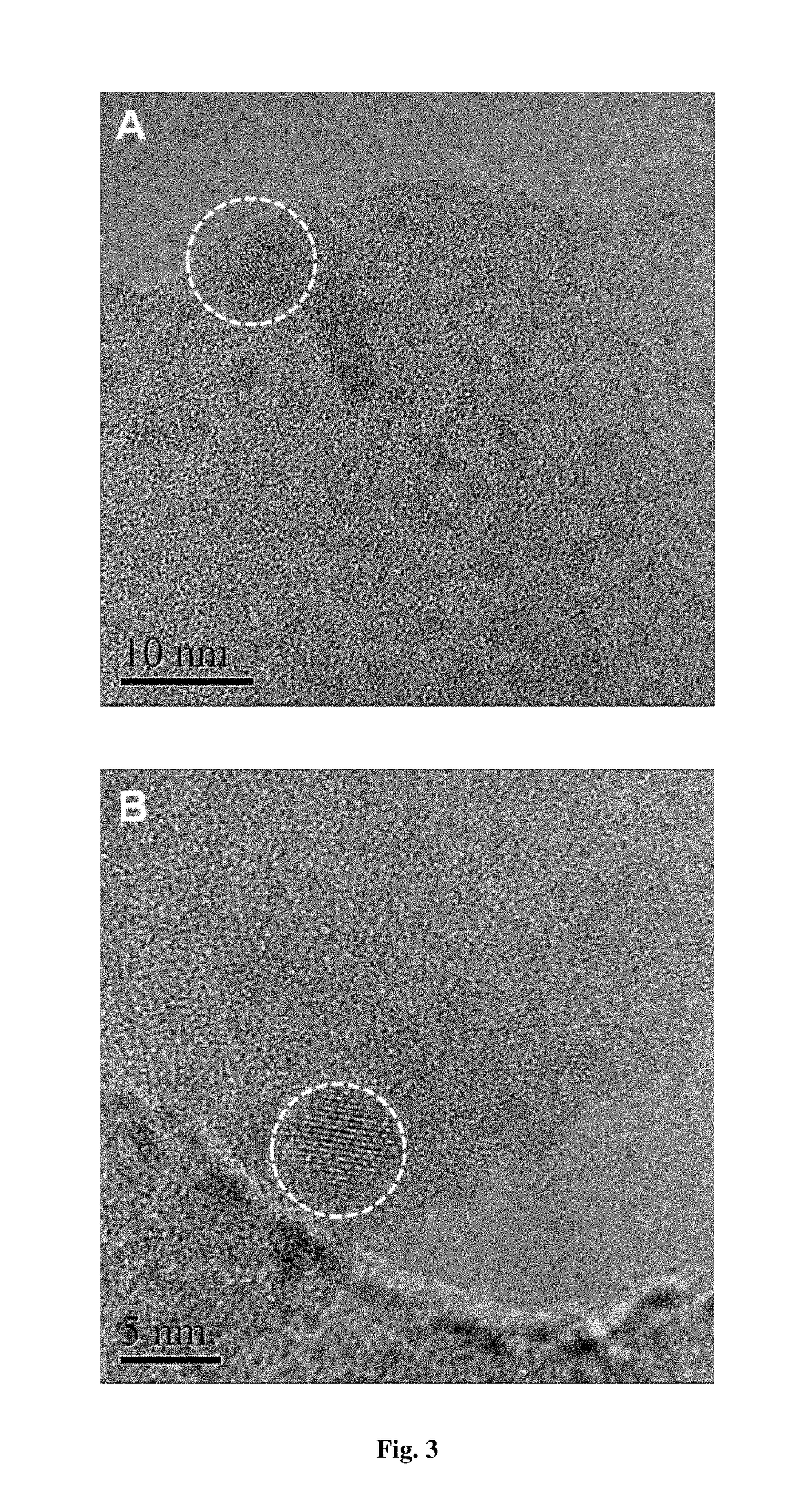Synthesis of olefins from oxygen-free direct conversion of methane and catalysts thereof
a technology of direct conversion and synthesis method, which is applied in the direction of hydrocarbon preparation catalysts, metal/metal-oxide/metal-hydroxide catalysts, physical/chemical process catalysts, etc., can solve the problems of indirect conversion of methane always accompanied by complicated facilities, and the portion of natural gas used in chemical industry is low
- Summary
- Abstract
- Description
- Claims
- Application Information
AI Technical Summary
Benefits of technology
Problems solved by technology
Method used
Image
Examples
embodiments
1. Catalyst Preparation
[0075]The preparation methods of silicon-based catalysts with metal dopants include the following solid phase doping technologies, such as Chemical Vapor Deposition (CVD), Vapour phase Axial Deposition (VAD), Laser induced Chemical Vapor Deposition (LCVD), metal doping sol-gel method, porous Si-based materials impregnation method, powder doping method and so on. The catalysts are marked as: A@SiOxCyNz.
[0076]The preparation of A@SiO2 catalysts (example 1, 2, 3, 4, 5, 7); the preparation of A@SiOC0.5 catalysts (example 6); the preparation of A@Si3C4 catalysts (example 8, 9, 10); the preparation of A@Si3N4 catalysts (example 11); the preparation of A@SiOC0.35N0.2 catalysts (example 12); the preparation of A / SiO2 catalysts (example 13) (Active species is highly dispersed on the support.)
Example 1
Chemical Vapor Deposition (CVD)
[0077]The vapor phase in the high-temperature reaction furnace is formed by bubbling 30 mL / min of carrier gas (10 vol. % of H2 and 90 vol. %...
example 2
Chemical Vapor Deposition (CVD)
[0078]The vapor phase in the high-temperature reaction furnace is formed by bubbling 30 mL / min of carrier gas (10 vol. % of H2 and 90 vol. % of He) into an 30 mL of ethanol solution dissolving 17 g of SiCl4, 94 mg of Co2(CO)8 and 86.9 mg Ni(CO)4. The mist vapor mixture sprayed from the center of combustor is hydrolyzed and melted at 1200° C. to form a uniform SiO2 material doped with Co and Ni. The material is further melted at 1400° C. in vacuum (10 Pa) for 6 h. The Co / Ni doping silica catalyst, 0.5 wt. % Co-0.5 wt. % Ni@SiO2, is obtained after subsequent quenching in cold water.
example 3
Vapor Phase Axial Deposition (VAD)
[0079]The vapor phase in the high-temperature reaction furnace is formed by bubbling 30 mL / min of carrier gas (10 vol. % of H2 and 90 vol. % of He) into an 30 mL of ethanol solution dissolving 17 g of SiCl4, 94 mg of Co2(CO)8. The mist vapor mixture sprayed from the center of combustor is hydrolyzed and axial deposited on the surface of alumina support at 1200° C. to form a uniform SiO2 material doped with Co. The material is melted at 1400° C. in vacuum (10 Pa) for 6 h. The Co doping silica catalyst, 0.5 wt. % Co@SiO2, is obtained after subsequent quenching in cold water.
PUM
| Property | Measurement | Unit |
|---|---|---|
| reaction temperature | aaaaa | aaaaa |
| pressure | aaaaa | aaaaa |
| temperature | aaaaa | aaaaa |
Abstract
Description
Claims
Application Information
 Login to View More
Login to View More - R&D
- Intellectual Property
- Life Sciences
- Materials
- Tech Scout
- Unparalleled Data Quality
- Higher Quality Content
- 60% Fewer Hallucinations
Browse by: Latest US Patents, China's latest patents, Technical Efficacy Thesaurus, Application Domain, Technology Topic, Popular Technical Reports.
© 2025 PatSnap. All rights reserved.Legal|Privacy policy|Modern Slavery Act Transparency Statement|Sitemap|About US| Contact US: help@patsnap.com



